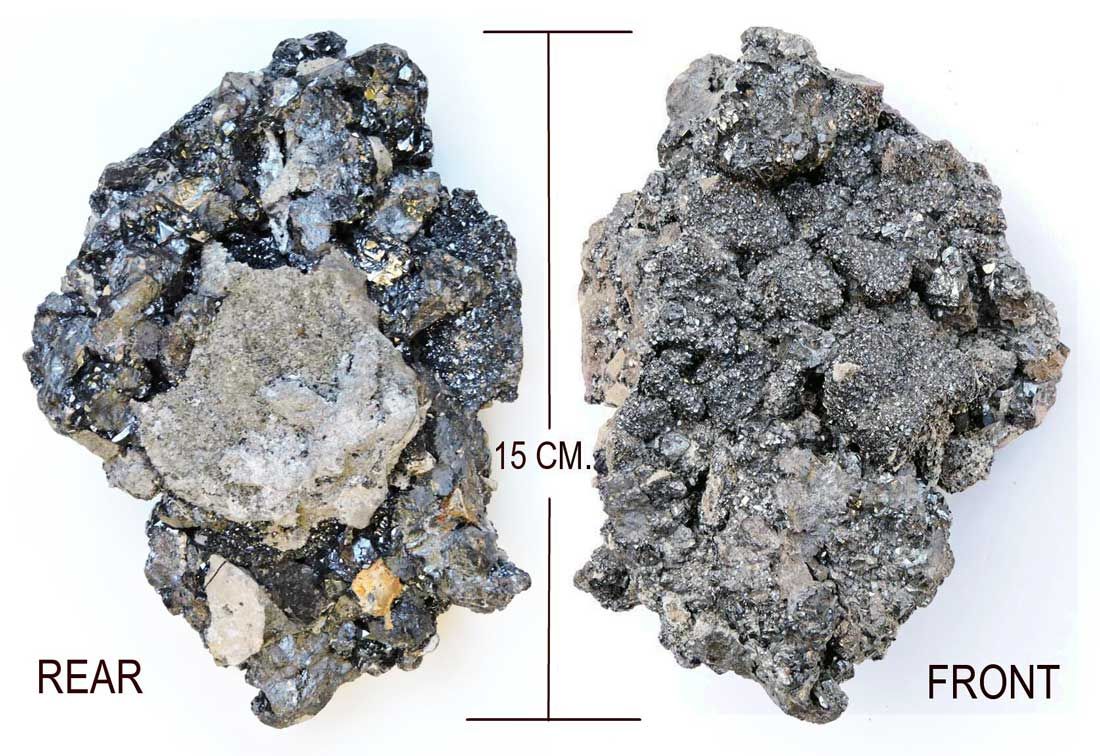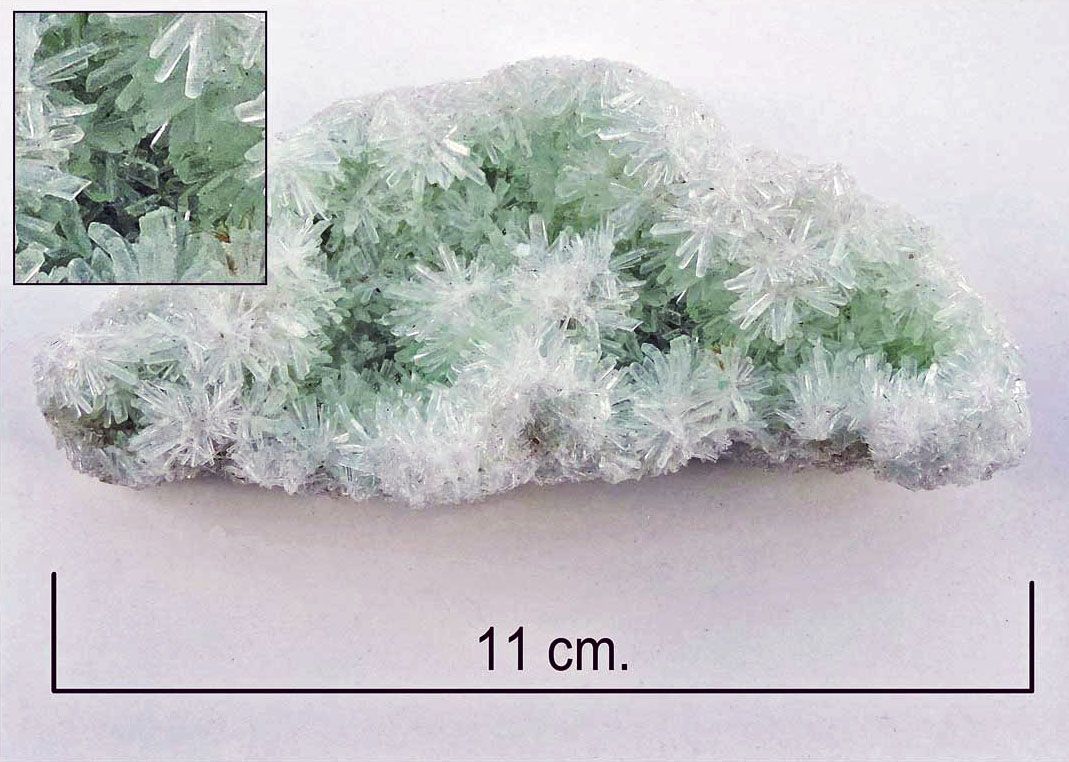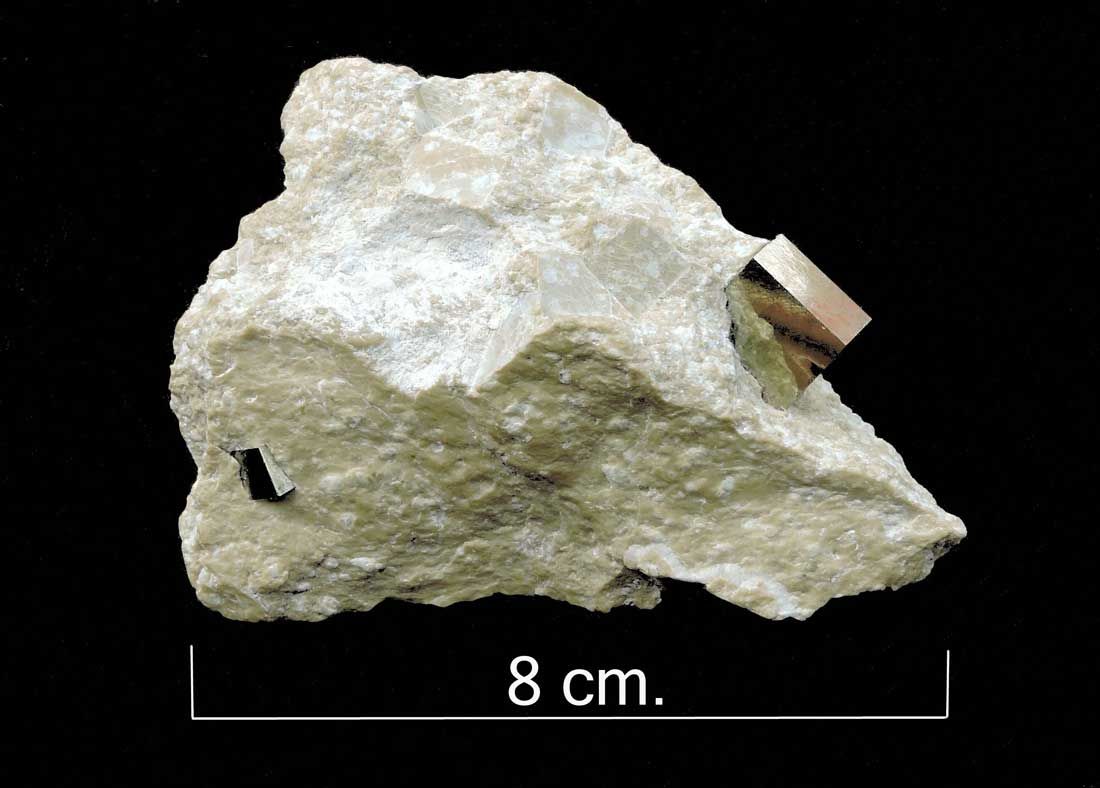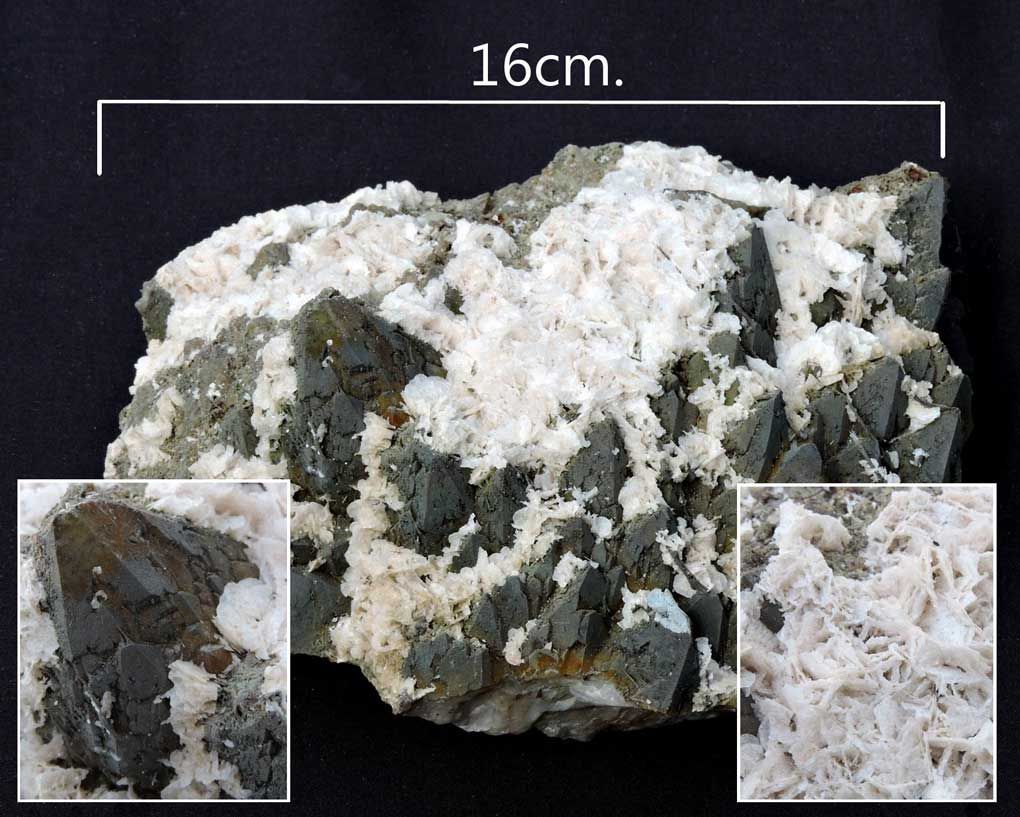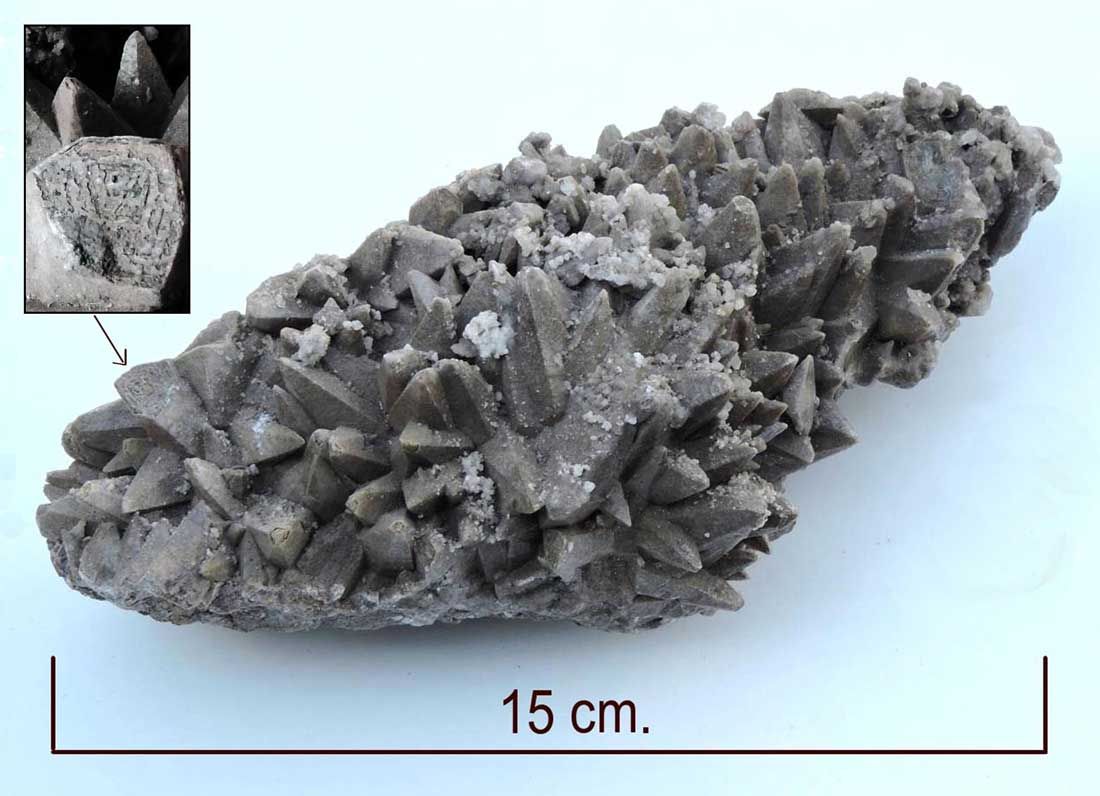
Calcite "dogtooth". Chihuahua,Mexico.
Calcite, CaCO3 This specimen of "dogtooth "calcite is from the Santa Eulalia mining district, Chihuahua, Mexico. The crystals are grey in colour, many with lustrous surfaces, which implies colouration by impurities rather than surface coating. There is only one damaged crystal, the cross section of which shows interesting markings. Many of the dog tooth crystals are coated with very small irregular crystals of calcite, and the rear of the specimen is about 50% covered with microscopic druzy calcite.
